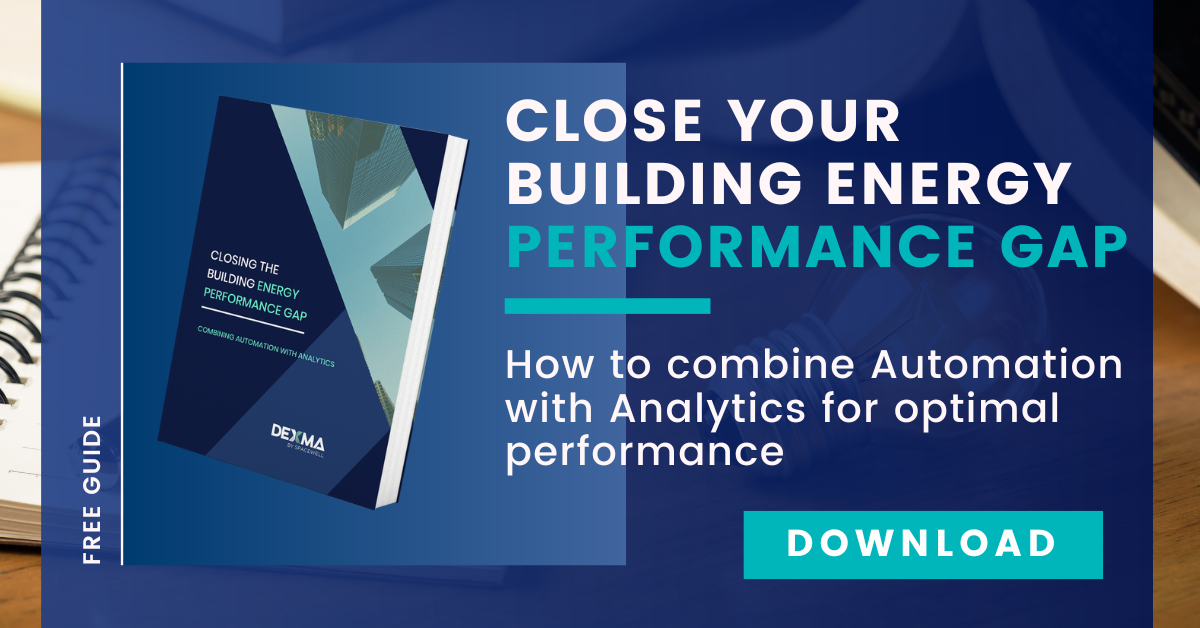These days, facility operators and energy managers have a lot on their plates. Keeping up with rapidly evolving building automation technology, constantly changing occupant expectations and best industry practices and standards is getting increasingly difficult. On top of that, there is the ubiquity and security risk of data coming from the ever-expanding Internet of Things, requiring a new set of skills, not to mention the tools to manage building data properly.
So how can energy teams keep up with the chaos?
Read on to discover some tried and tested strategies to bake building performance into your day-to-day tasks as a facility or energy manager.
5 Ways to Enhance Building Performance
Analytics is changing the landscape of facility and energy management, creating opportunities for teams to cut down on costs, provide a comfortable occupant experience, anticipate issues with proactive maintenance, and adopt a more intelligent and efficient workflow.
Try using the following 5 strategies to surf the waves of change in the building management industry, rather than fight the current:
1. Reject the “run to fail” model
“Run to fail” means running building operations like a fire department – in other words, fixing problems only when they become “fires” that are impossible to ignore. This MO was more understandable decades ago, given that facility managers and building operators had little to no visibility into their building systems.
Since then, a major shift has taken place in how we run our buildings: namely, a switch from a reactive to a proactive maintenance model. Though it is impossible to remain in a perpetually proactive state, analytics are helping teams get closer.
Real-time notifications and alerts provide building operators and energy managers with the information they need to prevent small issues from turning into big problems. This is essential to cutting down on costs in the short and long term: facility managers can reduce occupant complaints and issues can be solved more quickly and cost-efficiently in the short term. In the long term, facility managers are able to significantly prolong the lifetime of their equipment.
2. Open the conversation across teams to include Business Intelligence and best practices
The more experience we have using and improving our analytics solutions, the more shared knowledge and insights can be fed across departments within a company, and also back to the industry as a whole.
By using the insights gained from analytics with other teams and professionals beyond their organisations, energy and facility management teams are able to benefit from a larger network of knowledgeable experts.
3. Prioritise occupant happiness
Boosting occupant happiness should be just as important as avoiding occupant complaints. Considering the wealth of research backing up the relationship between building comfort, from thermal comfort to optimal carbon dioxide levels, facility teams are leveraging human performance data to improve cost savings. Analytics can help keep occupants comfortable with predictive weather systems, occupancy sensors, and advanced energy management technology for building automation systems and HVAC.
4. Use real-time energy monitoring to drive building costs down.
Ultimately, building owners want facility teams to keep occupants happy and operating costs low. Analytics solutions like cost estimate programs enable teams to zero in on top issues and fix those first – instead of spending $200 fixing a $2 issue. Using data, teams can have leaner operations, keep occupants comfortable, focus their capital expenditures, extend equipment lifetime, and cut down on energy use.
5. Adopt smarter workflows.
With analytics that enable teams to prioritise issues and spend less time digging through data, facility and energy managers are able to do what they do best: solve problems and cut costs. Digging through a building automation system (BAS) for an issue might take hours, but by using software that flags the issue for you, wrench time goes up.
Instead of putting out fires, facility teams armed with powerful analytics can quickly and easily optimise building performance workflows.
Want to learn more or get specific answers on how to make analytics work for your particular facility or energy team?
Join experts from Dexma Energy Intelligence and BuildPulse to learn how device-level automation and data-driven energy management can combine to optimise your building performance:
This article was first published on the Buildpulse blog by Brenna Buckwalter. It has been republished here with kind permission from the author. Some minor changes have been made to reflect DEXMA style considerations.





